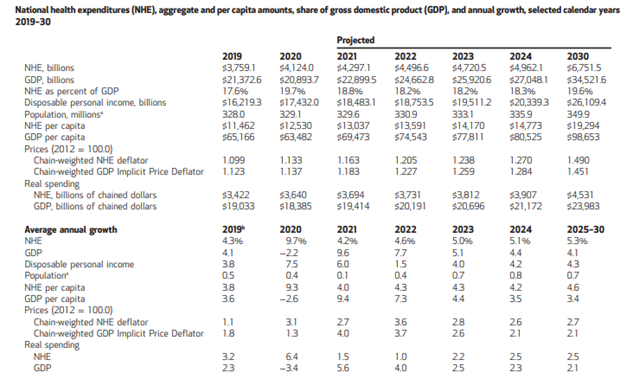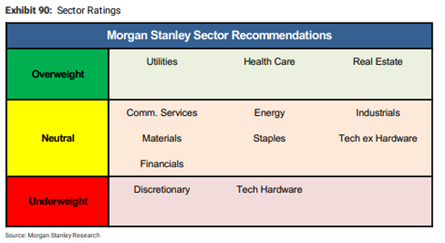In today’s blog, we’re going to dive deeper into the U.S. National Healthcare Expenditures (NHE) for 2021, and will continue through the first half of 2022 in Part 5. I believe you will be surprised at what we see in the data. Also, we will compare this data to the information on the overall U.S. economy. As I write this, the Euro had reach below par with the US Dollar, something we have not seen for over two decades! This was on the heels of the U.S. reporting that Year-Over-Year inflation was 9.1% with the implication the U.S. Federal Reserve will need an increase in interest rates faster, and over a much longer[1] period. More on the implications of all of this for the U.S. and Healthcare in a future blog.
First, as we notice in Part 3 on the U.S., the NHE increased by 9.7% over the calendar year 2020, clearly in part due to expenditure related to COVID-19. Though it is now mid-2022, and though the full numbers on costs for 2021 are not 100% in today, we do have good estimates from the Center for Medicare and Medicaid (CMS) via the April 2022 edition of Health Affairs magazine.
As the introduction to the article notes, NHE dropped in 2021 vs 2020, but is still up and collectively a huge increase over 2019. In the chart below, we can see the impact going back to 2019 with projection out to 2030.
As noted in the article from Health Affairs:
“Although considerable uncertainty remains, the COVID-19 pandemic and public health emergency are expected to continue to influence the near-term outlook for national health spending and enrollment. National health spending growth is expected to have decelerated from 9.7 percent in 2020 to 4.2 percent in 2021 as federal supplemental funding was expected to decline substantially relative to 2020.”

Let that sink in! Even under the heavy cost burden of a national pandemic, healthcare cost did slow; however, it effectively reverted to the mean or trendline. The gross cost from 2019 to 2021 increased 14%, and as you can see with the projections, it is expected to continue to increase in relative gross numbers consistent relative to GDP. It is projected that NHE will be over US6.7 trillion by 2030.
We are seeing a lot of other data that notes healthcare cost relative to GDP is now moved up to more than 20%, and as you will note, there is no “recession” or drop in GDP expected in 2022 to 2030 – something I would call an economic impossibility! We already know that U.S. GDP contracted by over 1% in the first quarter of 2022, and some are forecasting a minor increase for the second quarter. I would think that U.S. GDP will be lower this year and that will mean that the ratio of NHE to GDP will continue to rise. This week, we noticed a headline from Bloomberg: “US Recession is Already Here, According to Wells Fargo Investment Group.” This provides further validation for why we are so positive on the healthcare industry and its prospects for the next decade.
I will leave you in this installment with another graph from another major U.S. bank, this time Morgan Stanley. I think the graph with brilliant color speaks for itself.

In closing, we will keep analyzing the U.S. Economy and the relationship to healthcare. I am reminded of the movie The Graduate, released in 1967. In a famous scene, the protagonist asked about investments and where should he invest, he was told to invest in “plastics.” If the movie was remade today, the answer would easily be “healthcare.”
-Noel J. Guillama, Chairman
[1] https://www.cnbc.com/2022/07/12/stock-market-futures-open-to-close-news.html

